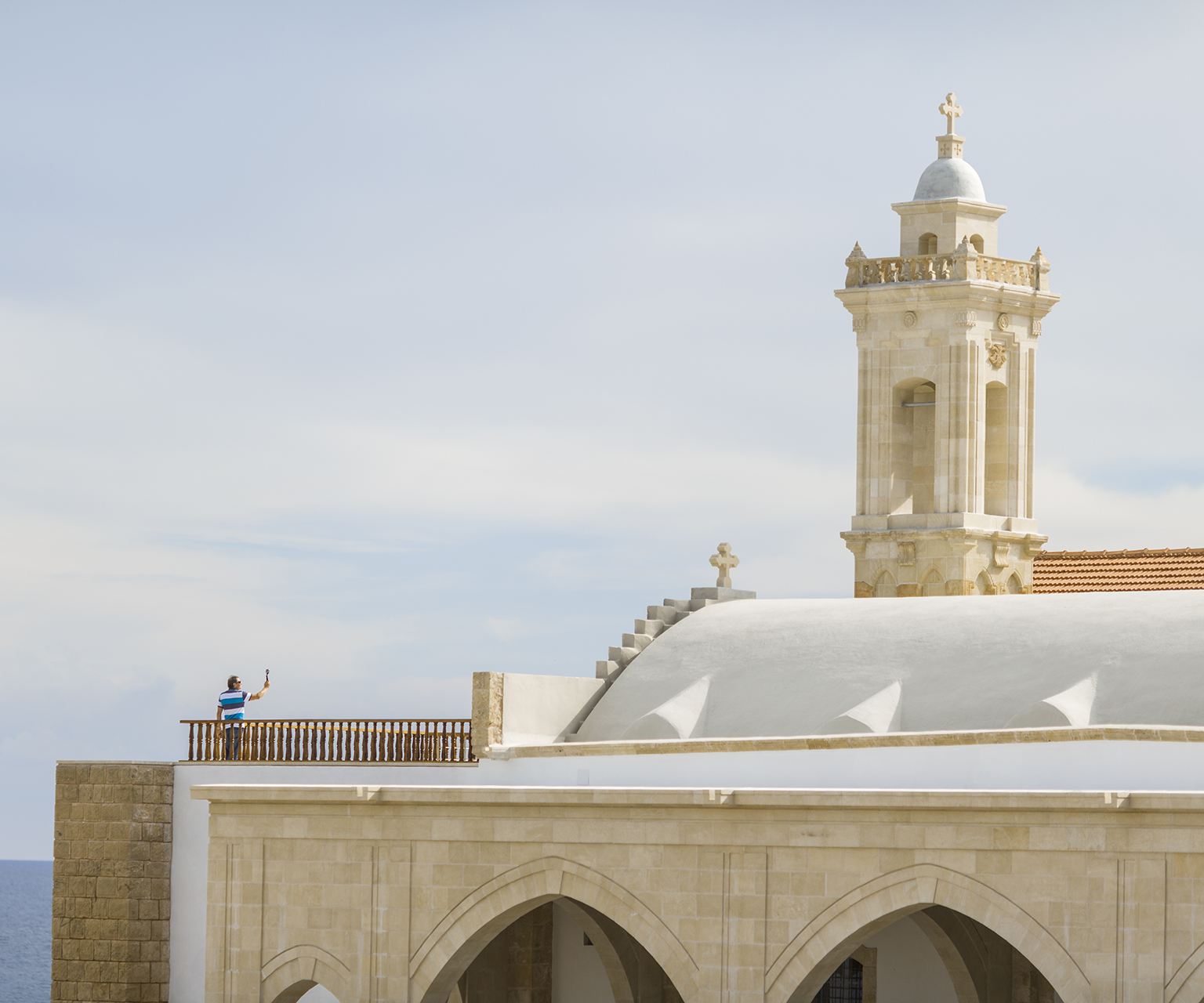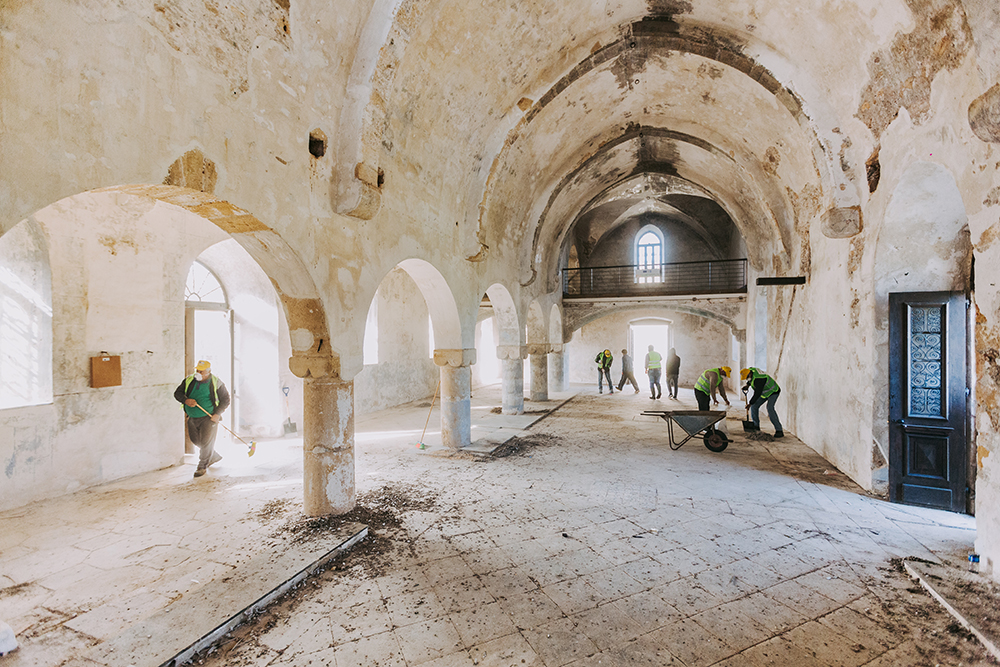Cultural heritage goes digital in Cyprus
September 24, 2024

Cyprus is dotted with churches, mosques and other historical structures, all of which contribute to the cultural heritage of the island.
Throughout history, Cyprus has borne witness to the rise and fall of empires, each leaving their mark on its rich tapestry. The Mediterranean island’s cultural heritage reflects the diverse and rich civilisations which have populated its land.
Cultural heritage and conservation efforts play a pivotal role in fostering social cohesion in Cyprus, not only safeguarding the tangible manifestations of the island’s rich heritage but also promoting dialogue and understanding among the Greek Cypriot and Turkish Cypriot communities. These efforts encourage mutual respect and appreciation for shared history and identity. People across the island are quite moved by bearing witness to these conservations, especially those with memories from the past.

Mosque in Kalo Chorio

Martinengo Bastion

Apostolos Andreas Monastery
For over a decade, conservation projects have flourished across the island, led by the Technical Committee on Cultural Heritage, funded by the EU and supported by UNDP as part of their role in the peace building process on the island. The committee’s Advisory Board is composed of Turkish Cypriot and Greek Cypriot archaeologists, architects, art historians and town planners from both communities. Now, digital technologies are significantly expanding the reach of these efforts to connect with people and communities across, and beyond, the island.
Preserving the stones
Cise Tunccag, an Engineer Associate at UNDP Cyprus, has been doing physical conservation work for 15 years now. “I had 17 years experience as an architect. Dealing with historical monuments is something that appreciates that,” she explains.
“We believe maintaining the monuments for the future generations is quite important.”
Since 2010, with support from UNDP and the European Commission, 168 sites - Orthodox, Maronite, Armenian and Latin churches, mosques and minarets, hamams, fortifications, watermills and aqueducts - have been preserved island-wide.
During the conservation process, sometimes they discover something unexpected.
“All of our projects have surprises,” says Hakan Gökberk, UNDP Cyprus Contract Engineer. “It is the essence of the work that during your conservation work, you find something. During one of our last projects, a church conservation in Prastio, over 100-year-old wall paintings were revealed under newer layers of paint. And the latest one is in another church, in the apses, where we found medieval ‘graffiti’ which will be documented very soon.”

Restoration work at Agios Panteleimonas Monastery in Camlibel

Restoration work at Agios Panteleimonas Monastery in Camlibel
Reimagining the stones
Along with the physical protection, there is a growing interest and recognition of the potential of digital heritage. Digital heritage offers benefits on both technical and accessibility levels, and UNDP Cyprus is the first in the Europe and Central Asia region to pursue its advantages.
Using technologies to map the sites and build 3D models serves as the first step of preservation (in case further damage occurs before proper conservation works can be done).

3D model of Panagia Trapezia Church
“Through all of these efforts at digital preservation, these places will be kept safe from environmental harm, conflict, and natural disasters,” says Ozgur Tel, Technical Assistant and Digital Focal Point, UNDP Cyprus.
The mapping also captures details difficult to record using traditional methods, allowing for more in-depth - and even remote - studying. This documentation is invaluable for historical research, education and monitoring and comparing changes.
“If it's not an ongoing project, and if there are no scaffoldings that we can go up on, using the drone really helps us to be able to see the buildings from the top,” Cise continues. “It’s mostly being used for monitoring and doing the survey of the project, creating the list of priorities.”
Photogrammetry of monuments involves capturing multiple, overlapping photographs of the monument from various angles using a camera or drone. These photographs are then processed using specialized software that analyzes the images to reconstruct the three-dimensional geometry of the monument. By identifying common points in the photographs and triangulating their positions, the software creates a detailed and accurate 3D model of the monument. This process requires careful planning, precise image capture and software processing to ensure the accuracy and quality of the final digital twin.

The drone at work

Operating the drone
UNDP Cyprus is carrying out this process in-house. For many on the team, this is their first time using these digital tools. But it’s a unique opportunity to learn new skills and increase efficiency, equipping them with valuable expertise for future challenges.
“In terms of 3D digitizing, it's my first time - I have just learned it,” explains Cise. “For three months I've been watching many tutorials, having some online and in-person courses and learning the software in order to improve my skills.”
Added value of digital heritage
These digital models are essentially the second level of preservation, creating a more dynamic and accessible way to safeguard cultural heritage.
“Digital preservation cannot replace existing preservation or conservation,” explains Hakan. “But it gets more and more important, day by day, with emerging technological gadgets that are easy to use. Now it can be handled very quickly instead of long, long hours. We are also transforming to that, as a team of architects and engineers, increasing our in-house capacity not only in the documentation, condition assessment and maintenance for the many archeological sites, but also stepping up this digital preservation.”
Another side of the digital work is the virtual tours, which are created using a 360 degree camera that takes panoramic photos that are then connected. This technology not only opens doors for those with mobility challenges or geographical limitations but also invites a broader audience to engage with and appreciate cultural heritage in new and immersive ways.
Additionally, these virtual tours provide local communities with a platform to showcase their heritage, fostering a sense of pride and ownership.

Young boys and girls experience the virtual tours.
“Usually in the events we are doing, we let kids use VR for our virtual tours,” says Cise. “It's so good to see their excitement, because they really feel they are in the monument. But what I experienced recently at our recent EU Day events, where we connected the computer to the VR as well - parents were able to see what their kids were exploring. So okay, the excitement of the kids was something to be expected. But the excitement of the parents was nice to experience. Because they were also asking which monument it was, which archaeological area...”
A repository
High-quality digital resources, including photographs, videos and interactive maps, are collected on the recently launched website: www.cyprusdigitalheritage.com.

www.cyprusdigitalheritage.com
“What we created is more than just a basic webpage,” explains Ozgur. “It is also a tool for creating detailed digital copies of monuments, capturing their rich nuances and historical significance.”
Researchers, students and experts can access and evaluate the heritage sites for research, education and exploration. The website also provides free and online access to individuals from all walks of life to explore and appreciate Cyprus's diverse cultural heritage, breaking down barriers for a wider audience.
The website offers information and context about Cyprus's historical sites, artifacts, and traditions, and immersive experiences that allow visitors to walk through and explore the spaces remotely.
“Our open archive is very important. It will be a good repository source,” says Hakan proudly. “This is only one section of it now, but the website is also growing day by day, including before and after photos, panoramic photos and virtual tours to see the buildings.”
Cultural heritage projects provide opportunities for collaboration and engagement empowering communities to come together in pursuit of a common goal.
To date, the project has completed 46 conservation projects, 3D models of two cultural heritage sites and one 3D Hypothetical, panaromic views of nine cultural heritage sites, digitally preserved 24 cultural heritage sites now accessible online on the website (with 10 more in process) and introduced 10 Heritage Youth Ambassadors.
“This digitizing initiative actually keeps us alive,” Cise says with passion. “Of course, as architects and engineers, being on the site physically and doing the conservation is a good experience for all of us. But this brings a new dimension to our work. And this really keeps us alive and belonging to the project, because we are also learning at the same time.”
The website serves as a tool for fostering cross-cultural dialogue and understanding, as it facilitates connections between Cyprus's heritage and the wider world. By documenting and showcasing the country's cultural legacy in a digital format, www.cyprusdigitalheritage.com plays a vital role in safeguarding Cyprus's identity and promoting cultural exchange on a global scale.
Since 2010, UNDP's "Support to Cultural Heritage Monuments of Great Importance for Cyprus” project, funded by the European Commission, aids the efforts of the bi-communal Technical Committees on Cultural Heritage, thus contributing to the ongoing peace and confidence building process by bringing communities closer to their shared heritage through the conservation and emergency safeguarding of selected projects.

 Locations
Locations

